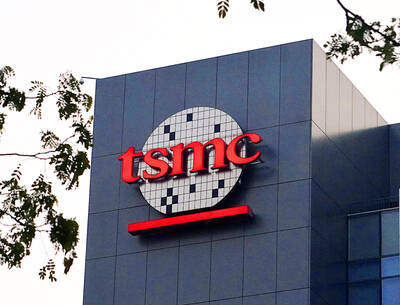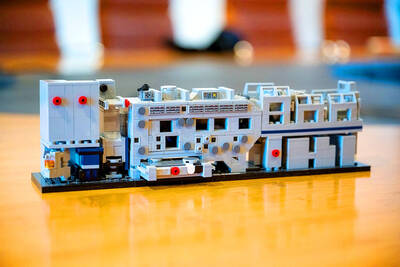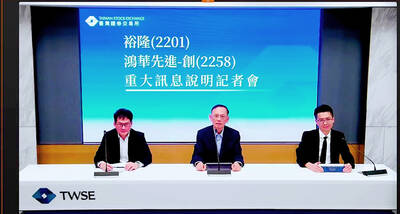Gold has rarely been a hotter trade, but the world’s two most important markets remain out of sync. In New York, the price of gold on April 9 topped US$1,750 for the first time in seven years. In London, it still has not caught up.
The dislocation first blew out late last month, when disruptions from the COVID-19 pandemic sparked concerns among traders about getting gold to New York in time to settle futures contracts.
In a chaotic couple of days, the premium for New York futures over the London spot price rose above US$70 — the highest in four decades.
The disconnect has remained wide as some of the world’s largest banks, which are also the top gold dealers, have grown wary.
Gold futures settled down 1.9 percent at US$1,698.80 an ounce in New York, falling 2.5 percent for the week.
Even though there is now plenty of time to get metal to New York for June delivery, the wild moves of recent weeks, and the potential for coronavirus-induced logistical headaches, have increased the perceived riskiness of trading the two markets.
“I would guess that the risk managers are not allowing these big positions to be run,” said John Reade, chief market strategist at the World Gold Council. “It’s moved from a concern about availability and transferability of metal to one of risk appetite.”
There has been some progress. Having traded at as much as US$60 in the past two weeks, by Friday morning the spread narrowed to about US$13 an ounce. Yet that still compares with just a few US dollars in normal times.
In theory, it should be relatively easy for any trader spotting such a wide differential between the two largest gold markets to arbitrage it profitably — by buying gold in London then selling it in New York and profiting from the difference.
One problem is size. The London market trades large 400-ounce bars, whereas only 100-ounce bars and kilobars are deliverable in New York.
Nonetheless, gold refiners around the world produce kilobars, which are the type of gold that is typically used to settle Comex futures and is popular with investors. This means it is usually straightforward to get hold of them and deliver to New York.
The pandemic has made that process more difficult. Gold typically flies around the world on passenger planes, and a vast number of flights have been canceled due to the pandemic. Even though Switzerland’s gold refineries have restarted since early this month, the temporary shutdown made it harder to get hold of certain products.
“Everyone wants to get gold into the same airplane. There’s almost a fight,” said Drazen Repak, head of trading banknotes and precious metals at Zurcher Kantonalbank.

CHIP RACE: Three years of overbroad export controls drove foreign competitors to pursue their own AI chips, and ‘cost US taxpayers billions of dollars,’ Nvidia said China has figured out the US strategy for allowing it to buy Nvidia Corp’s H200s and is rejecting the artificial intelligence (AI) chip in favor of domestically developed semiconductors, White House AI adviser David Sacks said, citing news reports. US President Donald Trump on Monday said that he would allow shipments of Nvidia’s H200 chips to China, part of an administration effort backed by Sacks to challenge Chinese tech champions such as Huawei Technologies Co (華為) by bringing US competition to their home market. On Friday, Sacks signaled that he was uncertain about whether that approach would work. “They’re rejecting our chips,” Sacks

Taiwan’s long-term economic competitiveness will hinge not only on national champions like Taiwan Semiconductor Manufacturing Co. (TSMC, 台積電) but also on the widespread adoption of artificial intelligence (AI) and other emerging technologies, a US-based scholar has said. At a lecture in Taipei on Tuesday, Jeffrey Ding, assistant professor of political science at the George Washington University and author of "Technology and the Rise of Great Powers," argued that historical experience shows that general-purpose technologies (GPTs) — such as electricity, computers and now AI — shape long-term economic advantages through their diffusion across the broader economy. "What really matters is not who pioneers

In a high-security Shenzhen laboratory, Chinese scientists have built what Washington has spent years trying to prevent: a prototype of a machine capable of producing the cutting-edge semiconductor chips that power artificial intelligence (AI), smartphones and weapons central to Western military dominance, Reuters has learned. Completed early this year and undergoing testing, the prototype fills nearly an entire factory floor. It was built by a team of former engineers from Dutch semiconductor giant ASML who reverse-engineered the company’s extreme ultraviolet lithography (EUV) machines, according to two people with knowledge of the project. EUV machines sit at the heart of a technological Cold

TAIWAN VALUE CHAIN: Foxtron is to fully own Luxgen following the transaction and it plans to launch a new electric model, the Foxtron Bria, in Taiwan next year Yulon Motor Co (裕隆汽車) yesterday said that its board of directors approved the disposal of its electric vehicle (EV) unit, Luxgen Motor Co (納智捷汽車), to Foxtron Vehicle Technologies Co (鴻華先進) for NT$787.6 million (US$24.98 million). Foxtron, a half-half joint venture between Yulon affiliate Hua-Chuang Automobile Information Technical Center Co (華創車電) and Hon Hai Precision Industry Co (鴻海精密), expects to wrap up the deal in the first quarter of next year. Foxtron would fully own Luxgen following the transaction, including five car distributing companies, outlets and all employees. The deal is subject to the approval of the Fair Trade Commission, Foxtron said. “Foxtron will be